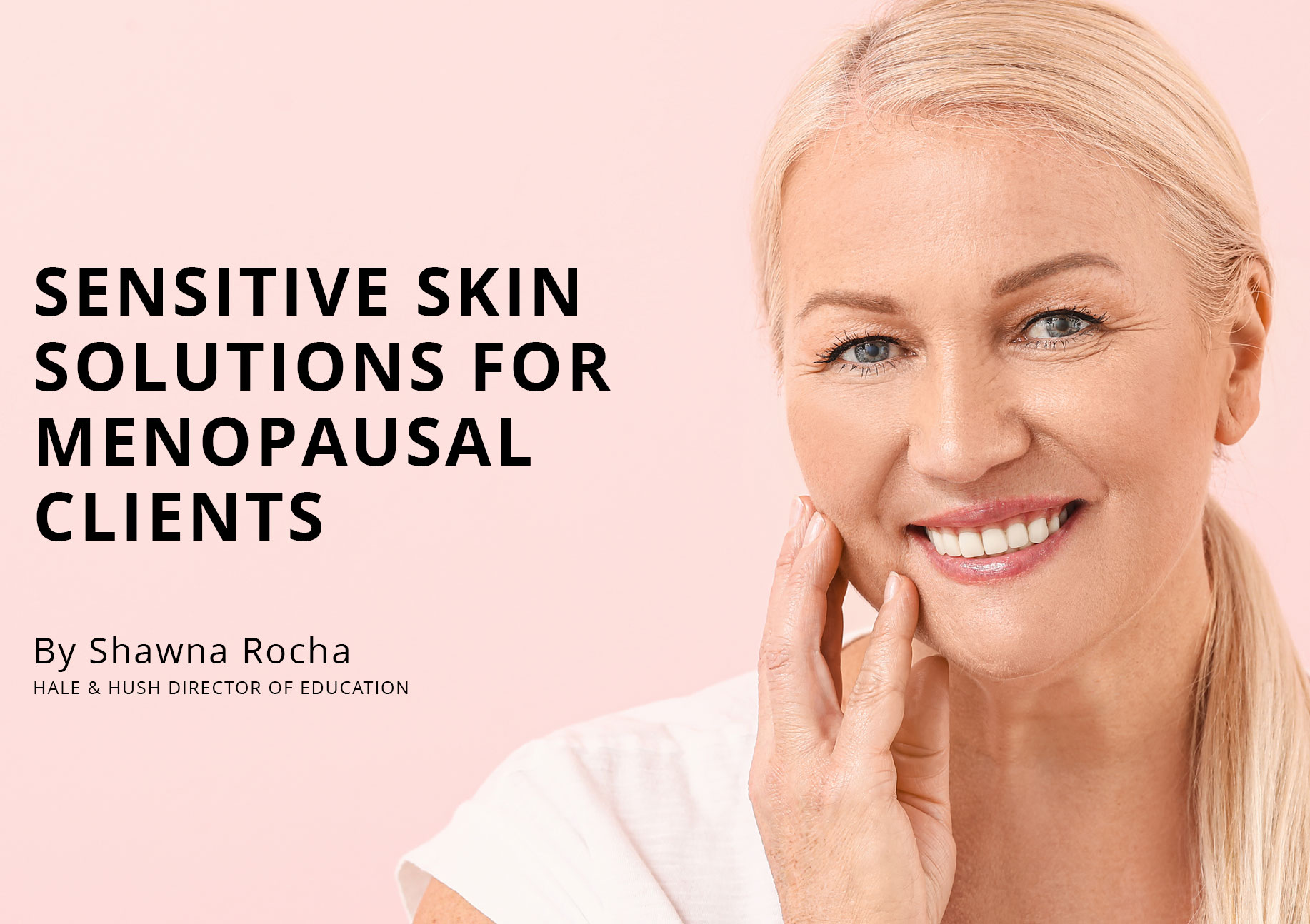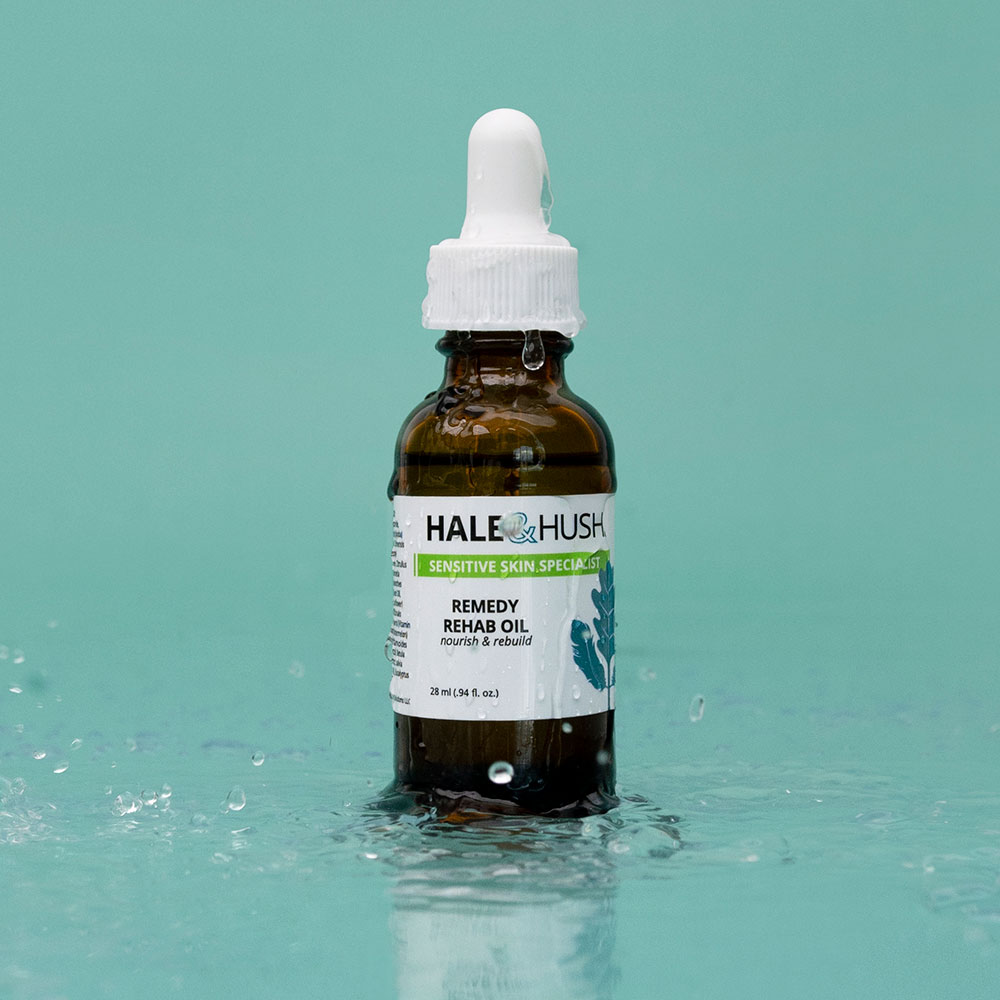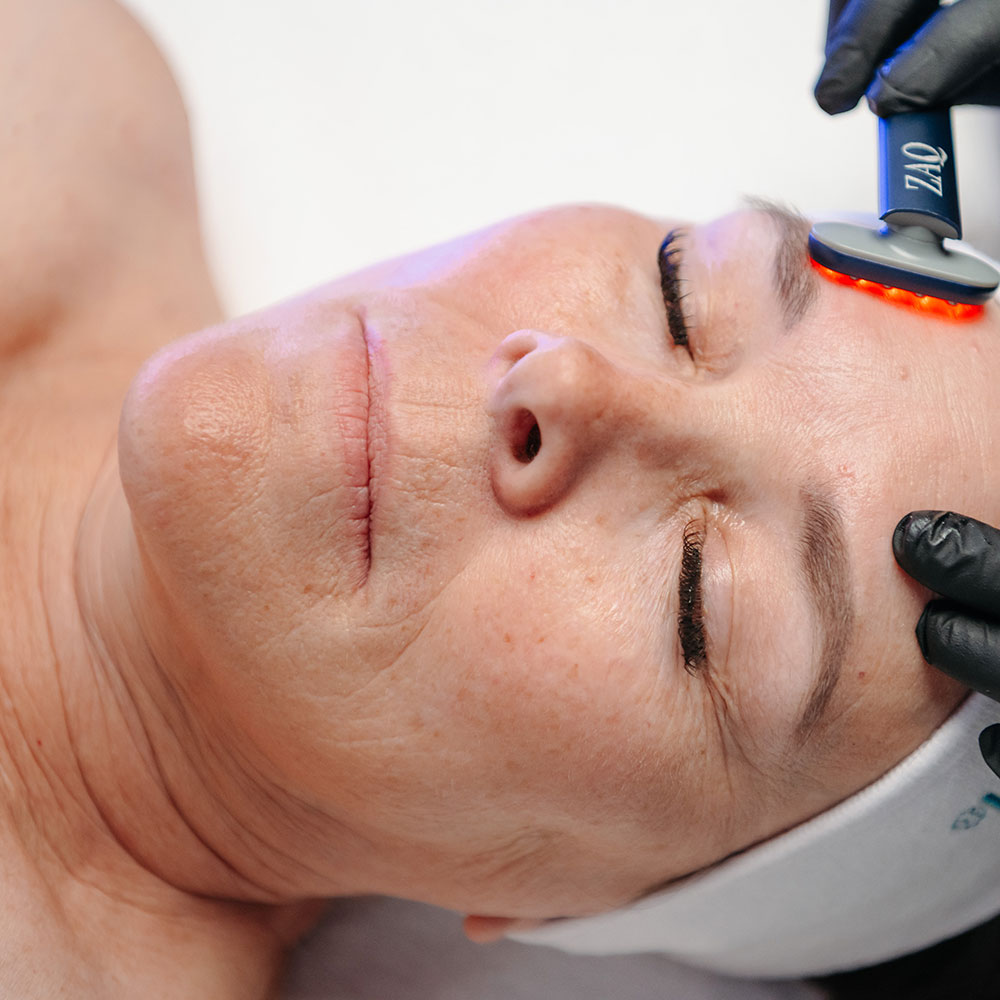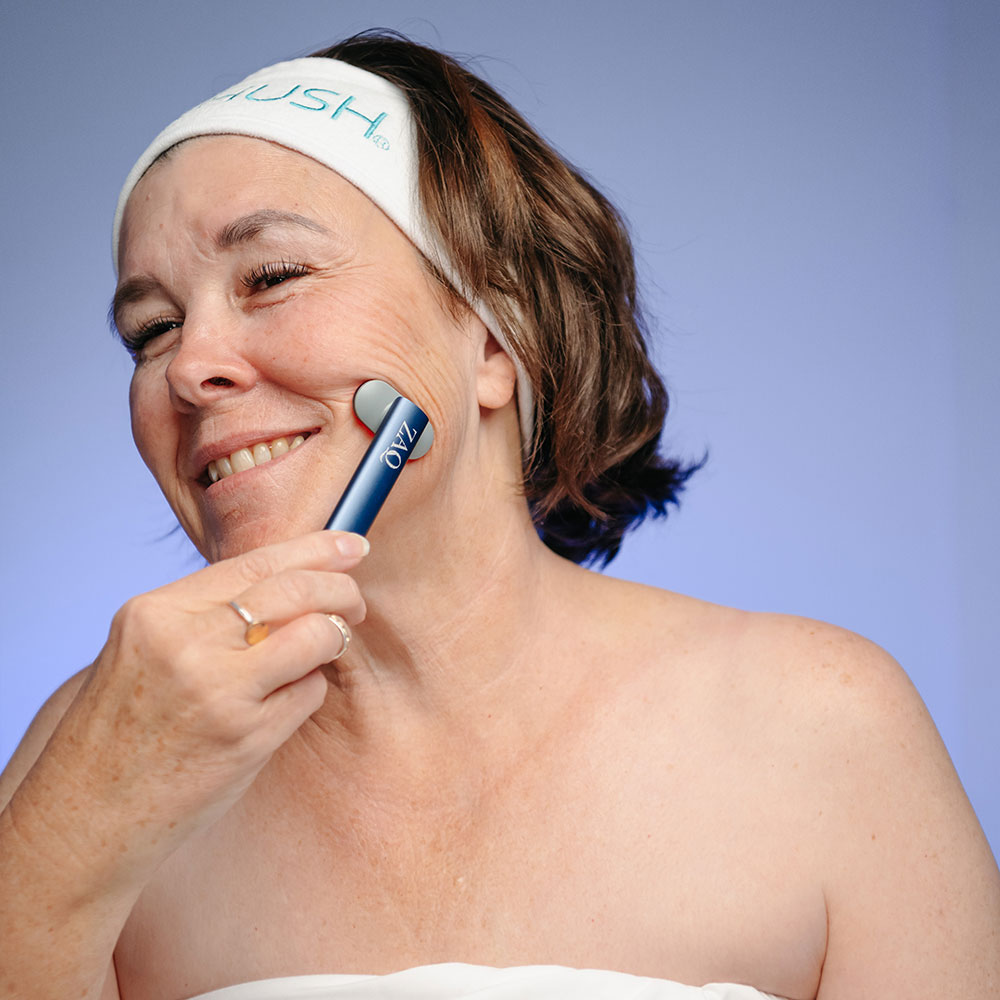
OCTOBER MONTHLY BLOG
By Shawna Rocha
Menopause is an inevitable part of life and is a large client population in treatment rooms and spas. In addition to hot flashes, fatigue, weight gain, and sometimes irritability and night sweats, skin changes are also common creating sensitive and easily sensitized skin.
When a woman enters menopause, significant physical and hormonal changes occur. Menopause occurs for most women around the age of 51 in the United States. At this age, the effects of a lifetime of sun exposure combined with hormonal changes, contribute to the loss of collagen and skin discoloration.
Collagen levels drop significantly (up to 30%) during the first 5 years of menopause. This leaves the skin vulnerable to sagging and wrinkling. Collagen is what gives skin plumpness and structure. The rapid loss of collagen can lead to fine lines and wrinkles or cause sagging in the cheeks.
As less estrogen and progesterone are produced, skin also becomes thinner and dryer. Estrogen helps skin produce oil and hold onto water, so extremely dry skin during menopause is common thanks to a drop in this hormone effecting barrier function.
Some people will also notice acne as estrogen levels fall and androgen levels remain stable (male sex hormones), increasing sebum production and causing pores to become blocked. Understanding how the skin may change during menopause can help estheticians adjust treatments and skincare routine to help prevent or slow aging’s negative effects for these clients.

During menopause, many people experience noticeable changes in their skin and to manage these changes, it’s important to maintain a good skincare routine. This includes using gentle products that help with barrier function and contain age fighting ingredients that target these skin conditions. Using mild cleansers and exfoliants, hydrating and moisturizing the skin, and focusing on cumulative damage by protecting skin with SPF is imperative. The following are the most common menopause-related skin issues:
Age Spots & Sun Damage becomes more apparent during menopause. Areas where the skin appears darker may show up on the face, neck and chest, arms, or hands. Skin cancer is also more common at this age, so suggest to practice regular at-home skin checks in addition to visiting a dermatologist annually. Products containing antioxidants to fight free radical damage, and daily sunscreen can also help combat signs of aging and prevent further damage.
Acne or Hormonal Acne can occur in menopause. As estrogen decreases, androgen levels may not and even may actually increase. This hormonal change increases sebum production which can create blocked pores leading to acne and cysts.
Enlarged Pores during menopause are primarily due to hormonal changes. As estrogen levels drop, the balance between estrogen and androgens shifts leading to increased sebum production, which can make pores appear larger. Additionally, the decrease in collagen and elastin production during menopause contributes to skin losing its firmness and elasticity. This can cause pores to become more noticeable as the skin around them sags.
Dry Skin occurs in every menopausal client due to estrogen loss. Estrogen helps skin hold on to water. As this hormone decreases, skin becomes dryer. This may be especially noticeable during the winter months. Dry skin also makes wrinkles and other blemishes more visible. Thus, also leading to more sensitivity and loss of barrier function.
Changing pH balance will also occur due to the fluctuation in hormone levels, which can cause the skin to become more sensitive, leading to an increased risk of irritation and skin rashes. This may be especially true for those who have sensitive skin or chronic skin conditions like rosacea or eczema.
Bruising may also occur in menopausal skin. The skin thins as estrogen levels decrease. This leaves skin more vulnerable to injury and bruising as there is less structural support in the skin around small vessels, like capillaries.
Rashes or hives may also occur due to increased dryness and a change in the pH levels of skin and can make menopausal women more vulnerable to skin irritation and rashes. Those who have an existing skin condition, such as rosacea or eczema, can experience an increase in flare ups.
Drooping Jowls occur due to the rapid decrease in collagen levels and other connective tissues can lead to thinner skin and sagging jowls. After a lifetime of talking, smiling and laughing, the area around the mouth is among the first to show signs of aging. Nasolabial folds and marionette lines are among the first wrinkles to appear more pronounced in this area.
Sagging skin, bone loss, and a reduction of subcutaneous fat can lead to baggy circles under the eyes, a slight dip of the tip of the nose and elongated earlobes. Pores may also seem more apparent as skin loses firmness. Skin can also become crepey in appearance.
Wrinkles and fine lines that were once dynamic, appearing only during certain facial expressions, may now become static, or etched into the skin. Wrinkles tend to show up earliest where skin is thinnest. Crow’s feet, forehead lines, and wrinkles around the lips are common.
Thinning and Loss of Elasticity occurs in the reduction of collagen production can make the skin thinner and less elastic, leading to sagging and more pronounced wrinkles. The skin can also become easily damaged and slow to heal.
Redness and Flushing are due to hot flashes and other symptoms of menopause. Hot flashes can cause temporary redness and flushing of the skin. Redness associated with hot flashes can me remedied with products that calm and sooth the skin.
Slower Wound Healing occurs due to decreased estrogen levels, which plays a crucial role in skin health and repair. Estrogen helps activate the cells responsible for wound healing, so when its levels drop, the healing process can take longer. This also relates to slower cell turnover because the rate at which new skin cells are produced, and old ones are shed slows down with age and hormonal changes. This slower turnover can also delay the healing process.
Increase in Facial Hair may happen as levels of female hormones fall, unwanted hair under the chin and along the jawline or above the lip could begin to appear. Waxing may not be an option due to thinning of the skin. If the skin becomes too thin for waxing, the skin can tear and bleed. To remove unwanted hair, use hair removal services using natural sugar or laser hair removal.

While nothing can be done to prevent aging, adapting skincare routines in menopause can help minimize its visible effects. Steps can be made to decrease sensitivities, repair barrier function, and prolong the effects of aging for clients. Start taking care of the skin way before menopause strikes. Even in perimenopause can prepare skin for the hormonal changes. In perimenopausal skin some notice skin changes during this time, which usually begins a few years before menopause and begin to adjust skincare products, treatments, and home regimens.
Use Sun Protection: Consistent sun protection should begin yesterday, regardless of age. Sun exposure is the primary cause of visibly aging skin in all skin types, so it’s essential to apply a broad-spectrum sunscreen daily with at least an SPF 30.
Use a Mild Cleansers: Some cleansers can be too drying for mature skin. Instead, use a mild hydrating cleanser. If clients are battling hormonal acne, choose a cleanser with salicylic or mandelic acid, which can help dissolve oil and debris that’s trapped in pores.
Avoid Unnecessary Ingredients: Rashes and skin irritation can be minimized by avoiding products with unnecessary ingredients such as fragrance and dyes.
Hydrate and Moisturize Daily: Even oil-prone skin needs a daily moisturizer. Choosing one with hyaluronic acid, skin loving oils, ceramides or glycerin can help hold water in the skin, for a more youthful, plump appearance.
Mild Exfoliation: Sunspots, acne, and dry skin can all be minimized with regular exfoliation. Once or twice weekly is often enough. Exfoliate too often and be left with skin that’s either too dry and uncomfortable or overcompensating by producing too much oil in response to dryness.
Use Anti-Aging Serums: Add an anti-aging serum to skincare routines. Look for ingredients like retinal, hyaluronic acid, vitamin C, mandelic acid, niacinamide, stem cells and growth factors or other anti-aging peptides. Certain serums may brighten the skin and boost collage production which can lead to a smoother skin appearance.
Eat a Balanced, Healthy Diet: Skin needs nutrition too. Eat a balanced diet and use supplements with care. Focusing on natural food packed with vitamins, minerals, proteins, good fats and full of antioxidants can help reduce free radicals, which lead to damaged skin cells. Alcohol and highly processed foods are not the skin’s friend.
Exercise Regularly: Regular movement reduces stress, allowing skin to repair itself more quickly. It also improves circulation, maintaining the efficient delivery of nutrients and oxygen to the skin’s surface.
Stay Hydrated: Staying hydrated is just as important as applying a moisturizer daily. Drink at least half your body weight in ounces per day. Cut back on alcohol, caffeine, and other diuretics.
Sleep Well: While sleeping, the body repairs damaged skin cells and does the important work of rejuvenation. Lack of sleep further dysregulates hormone levels, which only makes menopause harder on the skin.
Offer facial services that target this clientele. Aging treatments are the most popular across all esthetic rooms and spas. Use marketing and menu descriptions that capture menopausal skin. Offering resurfacing, peels, skin tightening devices and microneedling will help grow this type of clientele.
Resurfacing treatments can help tighten skin and reduce the appearance of pores. Laser treatments and microneedling can be used to combat thinning skin and pigment concerns. Some lasers are also used to help lessen the appearance of redness and small vessels that develop over time. Chemical peels come in varying strengths with a broad array of active ingredients that can combat skin texture, acne, and pigment concerns. There are devices utilizing other energy modalities, such as micro current, ultrasound, and radiofrequency, which have been shown to help tighten the skin as well. There are several lasers that can also combat unwanted dark facial hair that may arise after menopause. Multiple lasers, chemical peel, skin tightening treatments, and/or microneedling sessions in conjunction with topical products are often necessary to achieve an improved appearance of the skin.

Remember aggressive products and treatments are not the answer. It is not recommended to use intensive skincare, which was traditionally recommended for women in menopause. It can be too aggressive and doesn’t help to restore skin health and microbiome diversity. Many retinols and hydroxy acids can exacerbate skin dryness and sensitivity, leading to post-inflammatory pigmentation and further wrinkle development. Products should be recommended to increase skin’s natural barrier, alleviating some of its dryness and leading to healthier skin overall, especially those clients dealing with existing skin issues and sensitivities.
While menopause skincare won’t actually turn back the clock, one can expect to see some improvement to things like wrinkles, fine lines, and age spots, depending on what products the skin can tolerate and be used consistently. Incorporating anti-aging serums containing ingredients like retinals (retinaldehyde), vitamin C, peptides and mandelic acid to target wrinkles, fine lines and age spots can be helpful. These ingredients can help stimulate collagen production, improve skin texture, and reduce hyperpigmentation. Recommending a skincare routine to a client should always include a gentle cleaner, mild exfoliation, hydration and moisturization, serums, eye treatments and sun protection.

Sensitive skin care redefined by industry experts who have made it their #1 goal to supply the market with the highest quality sensitive skin care products.